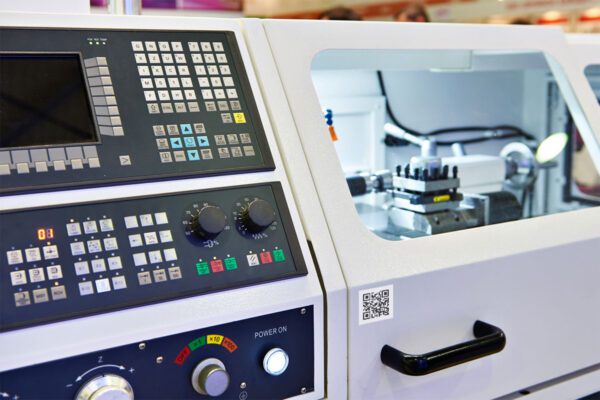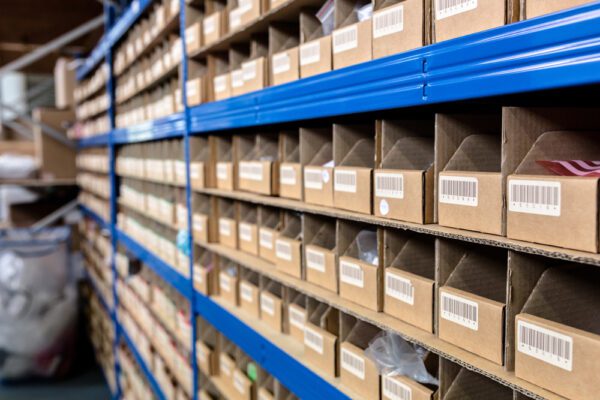
Key Takeaways
- Work order management should be tracked using common key performance indicators (KPIs).
- Maintenance Backlog tracks the amount of hours needed to perform to-be-completed work orders.
- On-time Performance measures the amount of work orders completed by their due date.
- Average Response Time determines how long it takes to start work orders after work requests are submitted.
The importance of effective work order management cannot be overstated. Work orders are the lifeblood of maintenance teams, keeping operations alive and maintenance activities flowing. However, unexpected failures, stockouts, employee absences, and other factors can cause maintenance teams to fall behind. This article provides common key performance indicators (KPIs) to help you monitor and improve your work order management process.
| This article is part of a maintenance management metrics KPIs series. Read our other KPI articles:
|
Work Order Management KPI Examples
Every organization approaches work order management in their own way by taking into account the health of their assets, available resources, and maintenance strategies. There are also an endless number of work order metrics that can be used, and it is up to your organization to select which are worth tracking. Our goal is to provide a common set of KPIs to measure the efficiency and effectiveness of your work order management process.
Regardless of your industry, organization size, or process, computerized maintenance management system (CMMS) software helps you document and report on maintenance activities, and provides the data you need to calculate critical work order metrics and KPIs.
The following sections discuss common work order management KPIs to consider for your organization.
1. Estimated Maintenance Backlog Hours

The maintenance backlog is a collection of pending or yet-to-be-completed maintenance work. It represents the difference between the demand for maintenance and the ability for the maintenance team to complete the work. It is often used as a work order management KPI because it provides insights into the workload, efficiency, and performance of the maintenance team.
The maintenance backlog is best thought of in terms of the number of hours it would take to clear the backlog with your available labor resources. To calculate the maintenance backlog size in hours, divide the total number of estimated hours to complete the work by the number of available labor hours of your team.
Let’s look at an example:
Suppose you estimate that your maintenance backlog would take 550 hours to complete. You manage a staff of 6 technicians who have 6.5 hours of availability for maintenance work each day after accounting for lunches, breaks, and other tasks. Therefore, there are 39 man hours available each day for maintenance work (6 technicians x 6.5 hours per technician = 39 hours). Using the maintenance backlog formula, the backlog is:
Backlog (in workdays) = 550 hours / 39 hours per workday = 14 workdays
Note that, in order to run this calculation, you must have a way of assigning estimated hours to work orders. Many CMMS systems provide this functionality. Otherwise, you are left going by gut feel, which may greatly over- or under-estimate the hours required to complete the backlog.
How to Interpret Maintenance Backlog
The very first maintenance backlog calculation serves as a benchmark or point of reference against which you can compare future calculations. Once you have a benchmark established, you can determine whether your backlog is growing or shrinking over time.
If maintenance backlog hours increase over time…
An increasing backlog indicates that the maintenance team is not able to promptly meet the demand for maintenance. While there may be multiple causes for this, the most common reason is the maintenance department being understaffed. There may simply not be enough man hours available for the maintenance team to keep pace with the amount of outstanding and incoming maintenance work.
Another possible cause for a large maintenance backlog may be due to an inefficient work order management process. For example, work requests may not be given proper scrutiny, leading to duplicate work orders for the same issue. Requesters may also submit requests with incomplete information, further delaying work.
A lack of proper prioritization may also result in lower-priority, less complex tasks being addressed first, further delaying more complicated repairs. It’s possible that the backlog estimate is driven by a few, time-consuming repairs. Improper planning or scheduling may also place an unrealistic workload on the maintenance team, causing work to fall behind.
A growing backlog may also be due to completed work orders that are not properly closed out, meaning they stay in the queue and are counted in the backlog. In this case, employees may need a reminder or training on how to close work orders in the CMMS.
To combat a growing backlog, you must either: reduce the number of backlog hours, or increase the available labor hours. We’ve already touched on some ways to reduce the backlog hours. To increase the available labor hours, you may use the KPI data to justify hiring additional maintenance staff or consider maintenance services from outside vendors.
If maintenance backlog hours decrease over time…
A decreasing backlog means that the maintenance team is able to complete work orders in a timely manner. While generally a positive sign, a backlog that is too small can introduce other problems.
For example, no pending maintenance work means labor resources are being underutilized and could indicate overstaffing. This article by Efficient Plant states that “a backlog of less than two weeks indicates you are over-staffed.”
A small backlog might also indicate that there is a lack of focus on proactive maintenance, resulting in the team only responding to urgent issues as they arise. This may pull technicians off of planned work or other high priority repairs, leading to further delays and downtime.
More concerning is that a small backlog could be a sign that the maintenance team is not following your established work order management process and failing to enter all work in your maintenance tracking system. This means that management does not have visibility of all work that is needed and gives an inaccurate picture of the maintenance backlog.
If the backlog is getting too small, you may need to increase focus on preventive maintenance tasks, revisit any past deferred maintenance, verify your team is following your work order management process, or use the available time for professional development and training opportunities.
Read: How to Implement a Proactive Maintenance Strategy
So, how big should the backlog be?
Having a maintenance backlog is not a bad thing – in fact, it’s expected. The appropriate size of the backlog depends on the size of your organization and make up of your maintenance team. Though the recommended backlog size varies, according to this Reliable Plant article, a typical 24/7 continuous-process operation should have a total backlog of about 4 weeks.
2. On-Time Work Order Performance

On-time work order performance measures the percentage of work orders that are completed by their due date within a given time period. It is used to track how well the maintenance team is managing the queue of work orders and can indicate whether you have an appropriate amount of labor resources. In order to utilize this KPI, work orders must be assigned a due date.
To calculate on-time work order performance, divide the number of work orders due within the reporting time period that were completed by their due date by the number of work orders due in that same time period. Then, multiply by 100 to express the result as a percentage.
Let’s look at an example of the on-time performance KPI:
Suppose 300 work orders were due in January 2024, and out of these, 250 were completed by their January due date:
On-Time Work Order Performance = 250 work orders completed in January with January due date / 300 work orders due in January = 250 / 300 = 0.83 *100 = 83% work orders completed on time.
How to Interpret On-Time Work Order Performance
A high percentage of on-time work order performance means that work orders are being completed within their expected timeframes. This usually reflects effective maintenance planning, resource allocation, and labor productivity. As an added bonus, service requesters and customers will have high satisfaction rates with the maintenance department. For reference, this Reliable Plant article states that world-class work order performance is greater than 90%.
A low on-time performance value may be rooted in how work orders are planned, scheduled, and assigned.
Planning
In terms of planning, factors such as proper resource allocation and availability, accuracy of time estimates, instruction clarity, and proper prioritization all greatly impact on-time performance. A lack of available resources can delay work order completion. Unrealistic time estimates result in missed deadlines. Unclear instructions leave workers confused and waste valuable time in figuring out what needs to be done. Ineffective prioritization means that critical tasks may be ignored in favor of less important ones.
CMMS software allows you to create work orders and track the resources required to complete maintenance work, resulting in better maintenance planning. Organizations can use a CMMS to forecast the demand for maintenance resources, such as labor and parts, so that they are available for upcoming maintenance work. Using historical work order data, maintenance planners can better predict how long certain task or procedures will take, leading to more accurate time estimates. Having asset performance data and historical maintenance information at your fingertips enables you to better prioritize maintenance work.
Scheduling
Issues with scheduling stem from the availability of maintenance resources and the timing of maintenance work. The maintenance team should work closely with the production or facility management team to determine optimal times for maintenance. Once maintenance has been scheduled, you must coordinate the availability of the necessary parts, tools, and labor.
A CMMS makes it easy to share the maintenance workload with other departments in order to align priorities and schedule with minimal interruptions and downtime. Once work orders are planned and scheduled, maintenance planners are better able to forecast demand and make arrangements to have sufficient resources available for maintenance work.
Assignment
How or to whom work orders are assigned can also impact on-time performance. For example, poor workload management may cause work orders to be assigned to technicians who are already overloaded or are unavailable, leading to delays. In other cases, tasks may be assigned to technicians who lack the skills or experience required to complete the work, leading to improper maintenance, future rework, or delays.
Using a CMMS, you can view the work orders assigned to each labor resource and balance the workload accordingly. By tracking technician’s labor craft, skills, and other certifications, you can assign labor to work orders that require their expertise and align with their strengths.
Further Reading: A Closer Look at On-Time Work Order Performance
3. Average Response Time

Average Response Time measures the average amount of time it takes to start work on a work order after it has been created. This KPI is typically used in organizations with a formal service request management system that enables non-maintenance staff to report issues directly to the maintenance team. Because work orders are often created, filled out, and closed after the fact, response time is not as useful for typical work orders (i.e., work orders not generated from a service request), unless the work orders being analyzed meet certain criteria.
To calculate the average response time, divide the total response time (i.e., the elapsed time between service request submission and work order labor start time) by the number of submitted service requests within the selected time period.
Let’s look at an example: Assume 50 service requests were submitted in a given month, with a cumulative response time of 1,000 hours across all requests.
Average Response Time = 1,000 hours / 50 service requests = 20 hours per request
How to Interpret Average Response Time
The average response time indicates how quickly the maintenance team addresses a customer’s maintenance needs. As one can imagine, the responsiveness of the maintenance team varies based on many factors, such as the availability of labor resources, the volume of incoming requests, and the complexity and urgency of the work. Keep these factors in mind when evaluating this KPI.
To determine whether response time is improving or worsening, you must first set a benchmark or baseline measurement. Future calculations will then be interpreted relative to this benchmark.
Relatively lower response times mean problems are addressed quickly. This may be because the work requested is high priority or that enough maintenance resources are available to focus on requests.
High response times relative to the benchmark mean that it is taking longer than usual to complete requests. An increasing average response time can indicate that requests are not being reviewed in a timely manner, are not properly prioritized, or may reflect a lack of available manpower.
So, what is an acceptable response time? It depends on the organization. However, many people expect the maintenance team to at least acknowledge the request and provide a time estimate within 24 – 48 hours.
Most CMMS solutions include work request management functionality, providing your organization with a single channel for employees to communicate maintenance requests. Service request administrators can review incoming requests, assign and prioritize them, and automatically communicate their statuses with requesters.
Improve Your Work Order Management Process with FTMaintenance Select
Work order management is a critical aspect of the maintenance process, ensuring timely, efficient, and organized performance of maintenance tasks. Given its importance, organizations must be able to measure, track, and analyze their work order management processes.
FTMaintenance Select work order management software provides a powerful platform for managing work orders from start to finish. It allows you to create fully detailed work orders in seconds, ensuring that your team has all the necessary information needed for high quality repairs and maintenance. Historical records, data views, and reports make it easy to track KPIs and continuously improve your work order process. Request a demo of FTMaintenance Select today to learn more.







Recent Comments